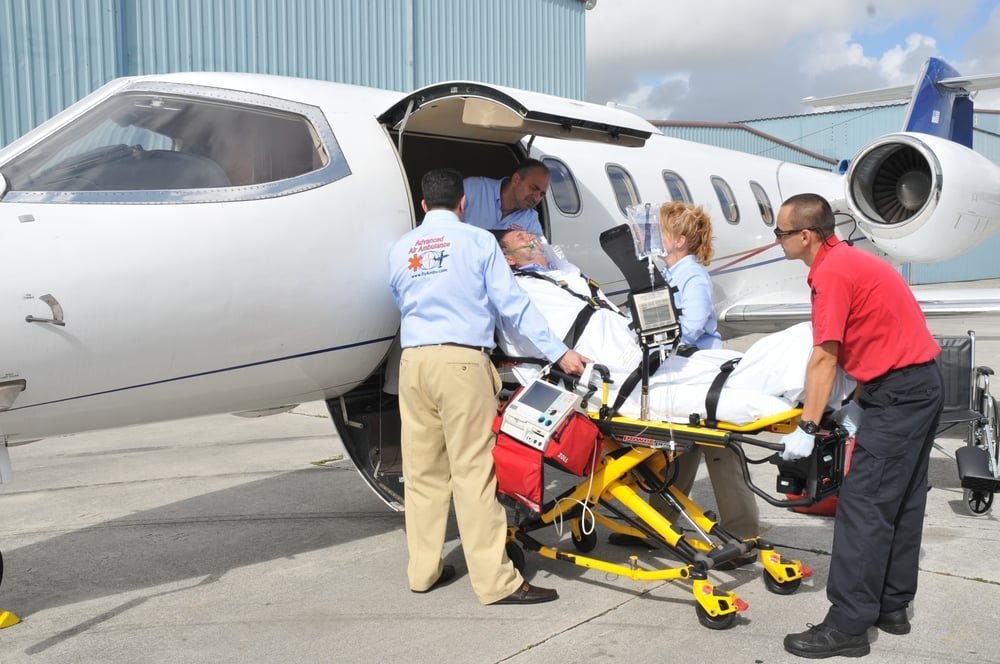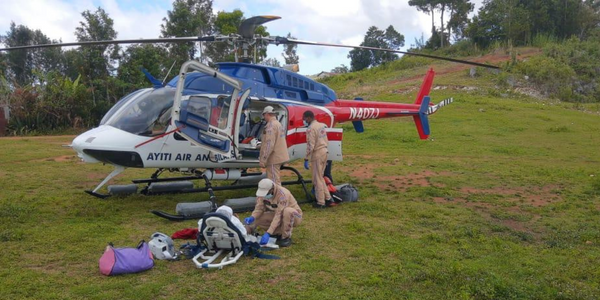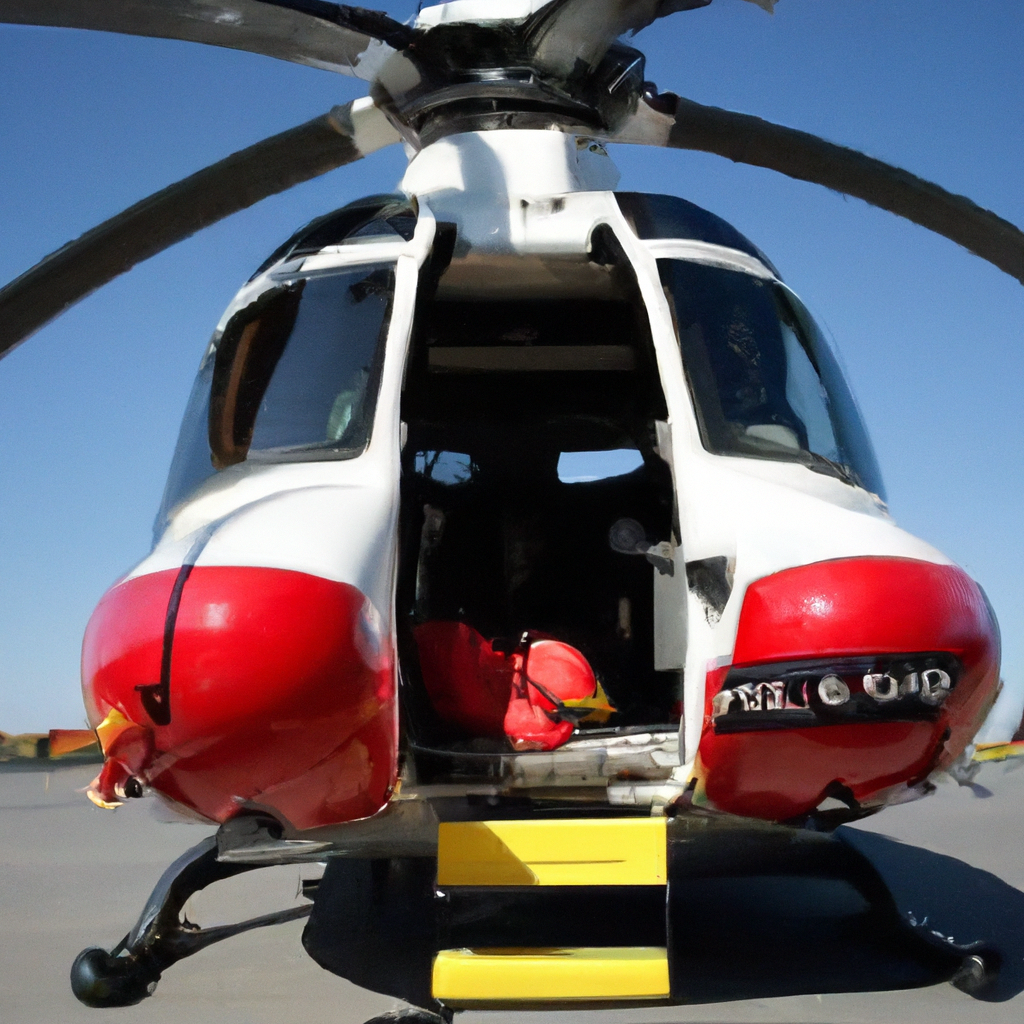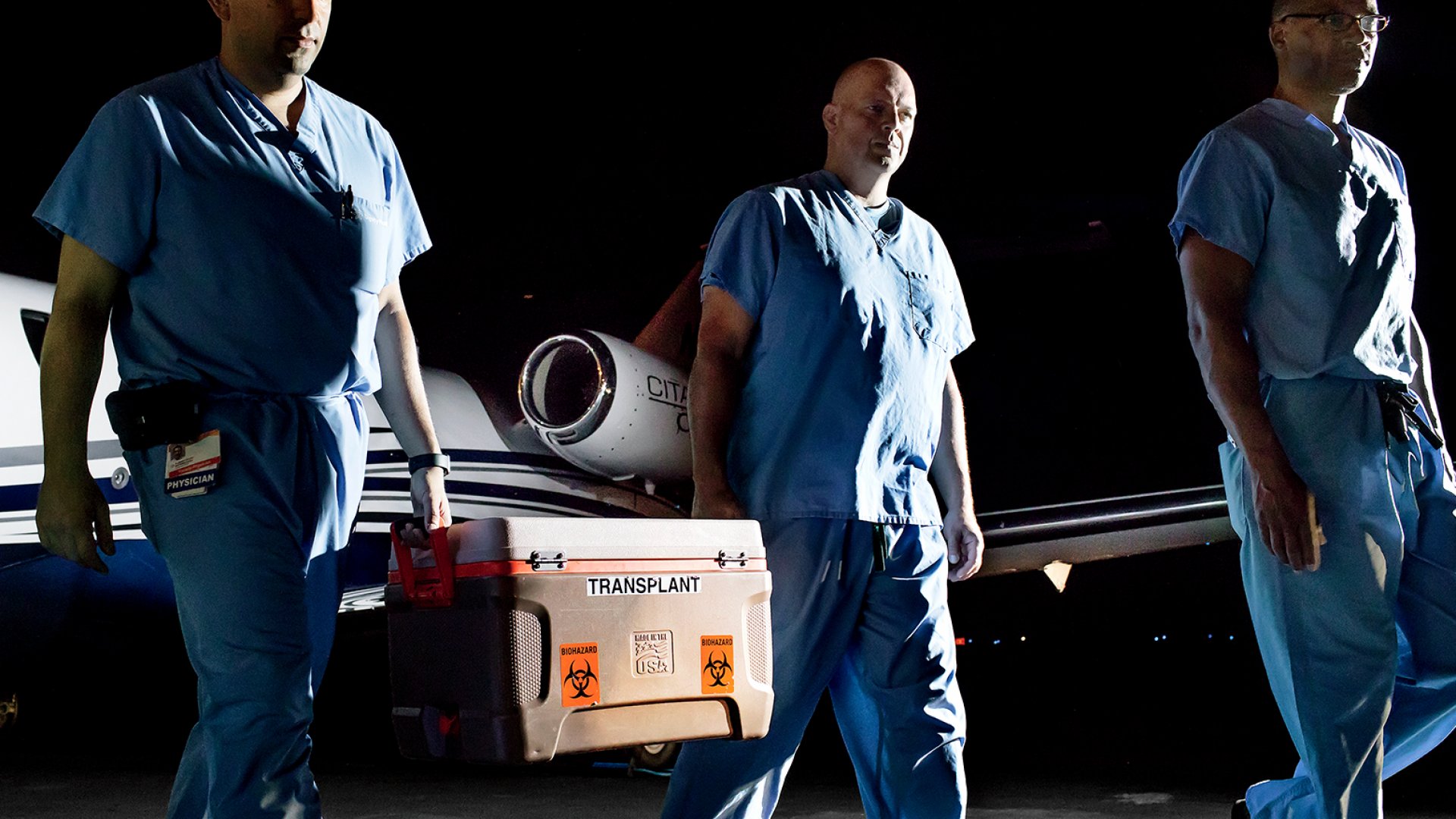Imagine you or a loved one are faced with a medical emergency in a remote location, far from the nearest hospital. It’s a distressing situation, to say the least. But thankfully, air ambulance services can swoop in to provide swift and specialized medical care, transporting patients to the appropriate medical facility in a fraction of the time it would take using traditional ground transportation. This article explores the impact of air ambulance services on survival rates, shedding light on the crucial role they play in ensuring timely access to life-saving treatments. So, grab a cup of coffee, sit back, and let’s dive into this fascinating topic together!
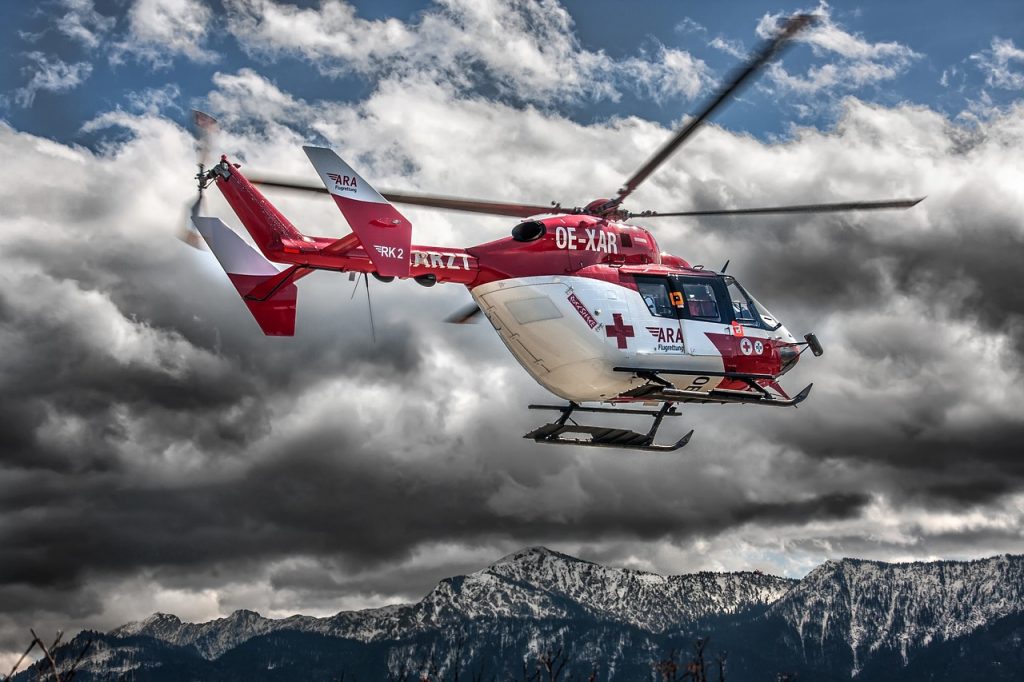
Understanding Air Ambulance Services
What are air ambulance services?
Air ambulance services refer to the transportation of critically ill or injured individuals by specially equipped aircraft. These services are often utilized when ground transportation is not feasible due to geographical barriers, such as remote or rural areas, or when time is of the essence in emergency medical situations. Air ambulances are equipped with advanced medical equipment and staffed by qualified medical professionals to provide critical care during transport.
How do air ambulance services work?
When a medical emergency occurs and air ambulance services are needed, the process typically begins with a call to a dedicated medical dispatch center. The dispatchers assess the situation and determine the appropriate response. Once the decision is made to dispatch an air ambulance, a specially equipped aircraft is deployed with a team of medical professionals on board. The aircraft will land as close as possible to the patient’s location, and the medical team will provide immediate medical care before transferring the patient onto the aircraft. The patient is then transported to a specialized medical facility where they can receive further treatment.
Types of air ambulance services
There are various types of air ambulance services available to cater to different medical needs. The two main categories are helicopter air ambulances and fixed-wing air ambulances. Helicopter air ambulances are typically used for shorter distances and are able to land in more challenging terrains, such as remote areas or urban environments. Fixed-wing air ambulances, on the other hand, are airplanes specifically designed and equipped for long-distance transports. They are equipped with advanced medical equipment and can provide a more stable and comfortable environment for patients during the journey. The choice of air ambulance depends on factors such as the distance to be covered, the medical condition of the patient, and the terrain of the area.
Factors Affecting Survival Rates
Response time
One of the critical factors that influence survival rates in emergency medical situations is the response time of air ambulance services. The ability to reach the patient promptly is crucial, as time is often of the essence in life-threatening situations. Air ambulances are able to bypass traffic congestion and geographical barriers, allowing them to reach the patient faster than traditional ground ambulances. Studies have shown that shorter response times correlate with higher survival rates, highlighting the importance of timely intervention in saving lives.
Specialized medical care
Air ambulance services provide access to specialized medical care during transportation. Medical professionals on board are trained to handle critical care scenarios and have access to advanced medical equipment. This specialized care ensures that patients receive appropriate medical interventions during their journey, improving their chances of survival. From administering life-saving medication to performing emergency procedures, air ambulance medical teams are equipped to handle a wide range of medical emergencies.
Transportation infrastructure
Another factor that affects survival rates is the presence of a well-developed transportation infrastructure. In areas with limited access to specialized medical facilities, air ambulances play a crucial role in bridging the gap. By transporting patients to regional or tertiary care centers, air ambulances ensure that patients receive the necessary medical interventions that may not be available locally. This access to specialized medical facilities can significantly increase the chances of survival, particularly for individuals requiring advanced treatments or surgeries.
Patient condition and severity of illness/injury
The condition and severity of the patient’s illness or injury also play a significant role in determining survival rates. Air ambulance services are commonly utilized in cases of severe trauma, cardiac emergencies, neurological emergencies, and other critical situations. The ability to rapidly transport patients to specialized medical facilities where they can receive appropriate treatment is vital for improving outcomes. The expertise of the medical professionals on board and the availability of advanced life support equipment further contribute to the patient’s chances of survival.
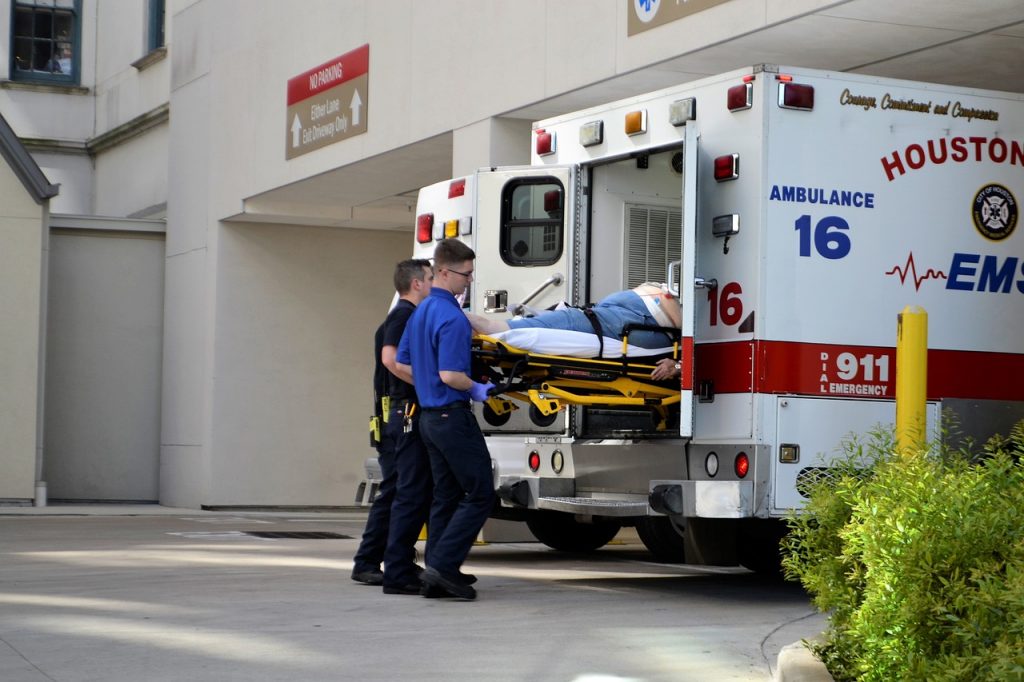
The Role of Air Ambulance Services in Emergency Medical Care
Emergency medical response
Air ambulance services play a crucial role in emergency medical response. When a medical emergency occurs, every second counts. Air ambulances are able to rapidly reach the scene of an incident, bypassing road traffic and geographical constraints. This ensures that medical professionals can provide immediate medical care, stabilize the patient, and initiate necessary interventions. The ability to reach the patient quickly can be a determining factor in saving lives.
Rapid transportation to specialized facilities
In many scenarios, patients require specialized treatments or surgeries that may not be available at the primary healthcare facility or in the immediate vicinity. Air ambulances bridge this gap by providing rapid transportation to specialized medical facilities. The ability to transport patients quickly and safely to regional or tertiary care centers ensures that they receive the level of care needed for their specific condition. This timely access to specialized facilities greatly enhances the chances of survival and improves patient outcomes.
Critical care during transport
Air ambulance services are not limited to transportation alone; they also provide critical care during transport. The medical professionals on board are trained to provide advanced life support, administer medications, and monitor the patient’s condition throughout the journey. This continuous care ensures that patients remain stable and receive appropriate medical interventions en route to their destination. The presence of specialized medical equipment, coupled with expert medical personnel, enables air ambulances to provide a high level of care, even during the most challenging journeys.
Case Studies: Examples of Improved Survival Rates
Improved outcomes in rural or remote areas
Air ambulance services have demonstrated their ability to significantly improve survival rates in rural or remote areas. These areas are often characterized by limited access to healthcare facilities and longer transportation times. In such cases, air ambulances act as a lifeline, providing timely medical interventions and rapid transportation to specialized facilities. By reducing the time between the occurrence of a medical emergency and the initiation of appropriate treatment, air ambulances can positively impact survival rates in these underserved areas.
Positive impact on accident victims
Accidents, whether they be car accidents, industrial accidents, or outdoor incidents, often result in severe injuries requiring immediate medical attention. Air ambulance services have proven to be instrumental in the transportation of accident victims to trauma centers or specialized hospitals equipped to handle complex injuries. By facilitating rapid transportation and providing critical care during transport, air ambulances contribute to improved outcomes for accident victims. The ability to stabilize patients and provide advanced medical interventions en route increases the chances of survival and reduces the long-term impact of injuries.
Enhancing access to specialized medical facilities
Air ambulance services have a significant impact on the accessibility of specialized medical facilities. This is particularly relevant in cases where individuals require organ transplantation, complex surgeries, or specialized treatments that are only available in certain facilities. Air ambulances enable patients to overcome geographical barriers, covering vast distances in a significantly shorter timeframe than ground transportation. By bridging the gap between the patient’s location and the specialized medical facility, air ambulances ensure that patients have timely access to the treatments they need, increasing survival rates and improving the overall quality of care.
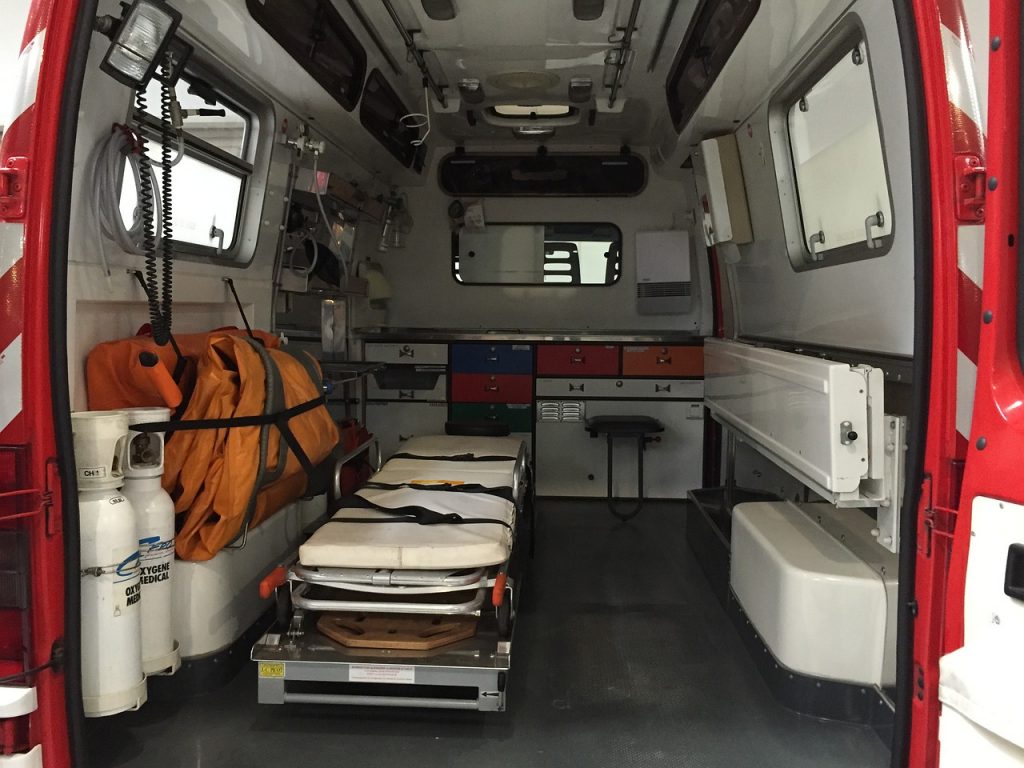
The Significance of Timely Medical Intervention
Golden hour concept
The concept of the “golden hour” is widely recognized in emergency medicine and underscores the significance of timely medical intervention. It refers to the critical first hour following a traumatic injury or the onset of a medical emergency. During this period, prompt medical care can make a significant difference in determining the patient’s outcome. Air ambulance services play a vital role in ensuring that patients receive the necessary medical care within this crucial window of time. By transporting patients rapidly to specialized facilities, air ambulances maximize the chances of successful interventions during the critical golden hour.
Benefits of early medical intervention
Early medical intervention is associated with numerous benefits and can greatly improve survival rates. By providing immediate medical care at the scene of an incident, air ambulance services can stabilize patients and initiate interventions that prevent further deterioration of their condition. Additionally, rapid transportation to specialized facilities ensures that patients receive the appropriate treatment for their specific condition as early as possible. Early intervention reduces the risk of complications, prevents the progression of illnesses or injuries, and increases the likelihood of positive outcomes.
Reduced mortality rates
The timely intervention provided by air ambulance services has a direct impact on mortality rates. By expediting access to medical care, air ambulances contribute to reducing the risk of fatalities in emergency situations. The ability to rapidly transport patients to specialized facilities equipped with the necessary resources and expertise significantly improves the chances of survival. Studies have shown that air ambulance services are associated with lower mortality rates, reinforcing the importance of timely medical intervention in critical care scenarios.
Air Ambulance Services in Disaster Response
Disaster response challenges
During disasters, whether natural or man-made, traditional modes of transportation may be severely disrupted, hindering access to medical care. Air ambulance services play a crucial role in disaster response by providing a rapid and efficient means of transportation. The deployment of air ambulances can overcome challenges such as damaged infrastructure, impassable roads, and overwhelmed healthcare systems. By mobilizing quickly and efficiently, air ambulances support disaster response efforts and ensure that critical medical care reaches those in need.
Ability to mobilize quickly
One of the key advantages of air ambulance services in disaster response is their ability to mobilize quickly. In emergency situations, time is of the essence, and the ability to initiate a rapid response can save lives. Air ambulances are specifically equipped and staffed to handle emergency medical situations, allowing them to be deployed swiftly when the need arises. This rapid mobilization enables timely evacuation of injured or critically ill individuals and facilitates the transportation of medical professionals, supplies, and equipment to disaster-stricken areas.
Supporting healthcare systems during emergencies
During emergencies, healthcare systems often become overwhelmed with a high volume of patients requiring medical attention. Air ambulance services provide crucial support by relieving pressure on local healthcare facilities and enabling the transfer of patients to less burdened hospitals or specialized facilities. By transporting patients efficiently and freeing up resources at primary healthcare centers, air ambulances ensure that those requiring urgent care receive appropriate treatment and reduce the strain on healthcare providers working in challenging circumstances.

Specialized Equipment and Expertise on Air Ambulances
Advanced life support equipment
Air ambulances are equipped with advanced life support equipment that allows medical professionals to provide critical care during transportation. The availability of equipment such as cardiac monitors, ventilators, defibrillators, and medication administration systems ensures that patients receive optimal care throughout their journey. This equipment allows for real-time monitoring of vital signs, immediate intervention in case of emergencies, and the ability to stabilize patients in critical condition. The presence of advanced life support equipment on air ambulances significantly enhances the quality of care provided during transportation.
Qualified medical personnel
Air ambulances are staffed by qualified medical professionals who have received specialized training in critical care and emergency medicine. These professionals usually include paramedics, nurses, and sometimes even specialized physicians. Their expertise and experience in handling critical situations and emergencies make them well-equipped to provide immediate care to patients in need. By having a highly skilled medical team on board, air ambulance services ensure that patients receive the necessary medical interventions and support during transport, further improving their chances of survival.
Specialized training
The medical professionals working on air ambulances undergo specialized training to enhance their skills in critical care and transport medicine. This training equips them with the knowledge and expertise required to handle a wide range of medical emergencies and ensure the best possible outcomes for patients. From advanced airway management techniques to emergency surgical procedures, the training received by air ambulance medical teams prepares them for the unique challenges encountered during airborne medical transport. This specialized training is crucial in maintaining the highest standards of care and providing the appropriate medical interventions required during air ambulance missions.
Air Ambulance Services and Organ Transplantation
Importance of rapid transportation for organ preservation
Organ transplantation is a complex and time-sensitive medical procedure that often requires the rapid transportation of organs from donors to recipients. Air ambulance services play a critical role in ensuring the timely transport of organs, as they can cover vast distances in a short amount of time. The ability to transport organs quickly and efficiently allows for optimal preservation and increases the viability of organs for transplantation. By facilitating timely delivery, air ambulances significantly contribute to the success of organ transplantation and ultimately save lives.
Facilitating organ procurement and transplantation
Air ambulance services are instrumental in facilitating the procurement and transplantation of organs. When a suitable donor organ becomes available in one location, it needs to be transported to the recipient’s hospital as quickly as possible. Air ambulances are the preferred mode of transportation for this purpose, as they can bypass geographical barriers and transport organs across vast distances within a short timeframe. This expedited transportation ensures that organs reach the recipients promptly, maximizing the chances of successful transplantation.
Improving transplant success rates
The rapid transportation provided by air ambulance services has a direct impact on the success rates of organ transplantation. Time is a critical factor in organ transplantation, and any delay in transportation can compromise the viability and functionality of the organ. Air ambulances allow for the swift transport of organs, minimizing the potential for damage or deterioration. By ensuring timely delivery of organs to recipients, air ambulances contribute to the success of transplant procedures and improve patient outcomes.

Cost Considerations and Air Ambulance Services
Factors influencing costs
Air ambulance services involve various factors that influence the costs associated with their utilization. These factors include the distance to be covered, the type of aircraft used, the urgency of the situation, the medical equipment required, and the availability of specialized medical personnel. Additionally, the overhead costs involved in maintaining and operating air ambulance providers also contribute to the overall expenses. The complexity of air ambulance services and the need for specialized resources and expertise necessitate a comprehensive cost assessment when considering their utilization.
Insurance coverage and financial implications
Costs associated with air ambulance services can vary significantly, and insurance coverage plays a crucial role in determining out-of-pocket expenses for individuals. Some insurance policies provide coverage for air ambulance services, while others may require additional insurance or include limitations and exclusions. It is important for individuals to understand their insurance policies and ensure that they have adequate coverage for potential air ambulance needs. The financial implications of utilizing air ambulance services should be considered and individuals are encouraged to consult with their insurance providers to clarify coverage details.
Balancing affordability and quality of care
One of the challenges in the utilization of air ambulance services is striking a balance between affordability and the quality of care provided. Air ambulance services are specialized and involve considerable costs, which can create financial burdens for patients and their families. However, the high level of expertise, advanced medical equipment, and rapid response times associated with air ambulance services contribute to improved survival rates and patient outcomes. Balancing affordability and the need for timely and specialized medical care is essential in ensuring that individuals have access to air ambulance services when necessary.
Challenges and Limitations of Air Ambulance Services
Weather conditions and operational constraints
Air ambulance services face significant challenges due to adverse weather conditions and operational constraints. Unfavorable weather such as heavy rain, fog, or high winds can limit the ability of air ambulances to safely operate. This can result in delays or cancellations of critical missions, potentially impacting patient outcomes. Similarly, limited visibility or poor landing conditions can restrict access to certain areas, especially in remote or mountainous regions. The safety of both the crew and the patient is of paramount importance, and operational decisions are made carefully in consideration of the prevailing weather conditions and associated risks.
Limited availability in certain regions
While air ambulance services are crucial in emergency medical situations, their availability may be limited in certain regions. Remote or sparsely populated areas may not have regular access to air ambulance services due to logistical challenges or infrastructural limitations. The lack of suitable landing sites, the distance to the nearest air ambulance base, or the absence of helipads in remote locations can all contribute to limited availability. These limitations highlight the need for alternative means of medical transportation and the importance of developing comprehensive emergency medical systems that cater to the specific needs of different regions.
Resource allocation and coordination
Air ambulance services operate within a complex healthcare system that involves various stakeholders, including emergency medical services, hospitals, dispatch centers, and government agencies. Coordinating resources and ensuring seamless communication among these entities is crucial for the effective utilization of air ambulance services. Resource allocation, including the availability and appropriate deployment of air ambulance assets, plays a significant role in meeting the demands of emergency medical care. Collaboration and coordination between different organizations involved in the delivery of emergency medical services are essential to overcome resource limitations and ensure efficient utilization of air ambulance services.
In conclusion, air ambulance services have a profound impact on survival rates in emergency medical situations. Their ability to provide rapid response times, specialized medical care, and efficient transportation greatly improves patient outcomes. From remote and rural areas to disaster response scenarios, air ambulance services bridge the gap in healthcare access and provide critical care during transport. The specialized equipment, qualified medical personnel, and extensive training on air ambulances contribute to the delivery of high-quality care. While challenges and limitations exist, the importance of timely medical intervention, the support provided during organ transplantation, and the balance between affordability and care quality underscore the significance of air ambulance services in emergency medical care.
